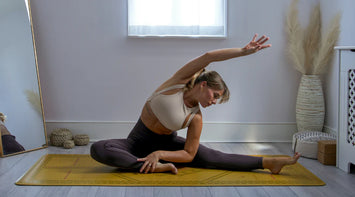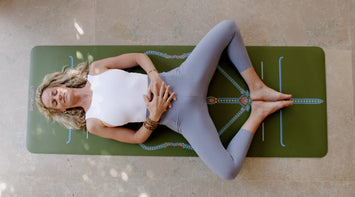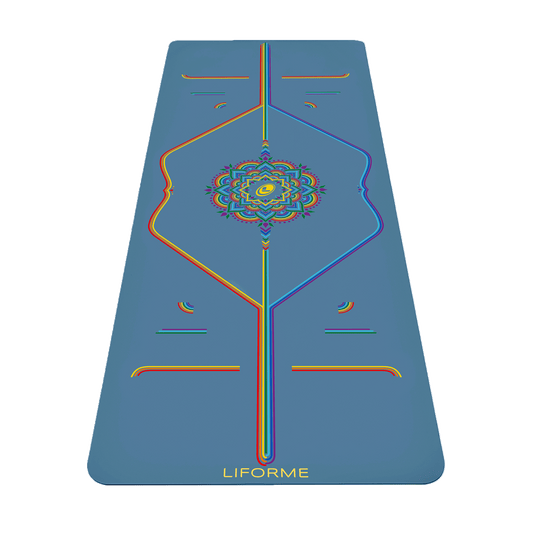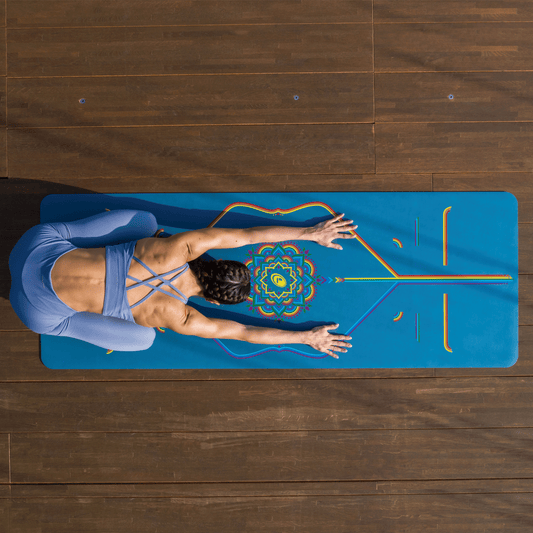Arm balances are some of yoga’s funnest, flashiest poses. Since most people spend their days with both feet firmly planted on the ground, the ability to elevate them while balancing on your hands is always going to look impressive. But yoga arm balances are more than showy party tricks. They expand our conception of what is possible. By lifting yourself up, you become uplifted and then uplifting. When your body and spirit feel heavy and low, you can lighten your load and your mood with a little balance play.
Crow Pose is the first arm balance that most people tackle, probably because it’s a pretty straightforward one, requiring no added twists or spectacular feats of flexibility to distract you from your battle with gravity. Because your body stays relatively compact in this pose, it’s a good place to figure out how to manage your weight without the added complication of legs sticking out here and there. Once Crow becomes comfortable, a whole host of other arm balances may soon be more accessible.
Crow Vs. Crane
In modern postural practice, Crow is the bent-arm version of this pose and Crane is the straight-arm version. However, the Sanskrit names of these two poses have gotten a little mixed up in our common usage. That’s not unusual for yoga poses in general. As yoga has been disseminated, different teachers have called poses by different names, as well as developed and named their own poses. There’s not really one authoritative reference source of all yoga postures, though we tend to consult B.K.S. Iyengar’s 1966 classic, “Light on Yoga,” when in doubt. In this instance, “Light on Yoga” depicts the straight-arm version of the pose, labels it Bakasana, and explains that baka means crane. Case closed, except that the bent-arm version is often also called Bakasana and translated as Crow Pose. We’re not sure how this Crow/Crane confusion came to be but for clarity’s sake, we’re following the convention of calling the bent-arm version Kakasana, since Kaka means crow in Sanskrit.
Hard Core
While it might seem like you need giant, bulky arms to hold yourself up, arm balances are more about core strength, flexibility, and body awareness, which helps you find your centre of gravity and craftily distribute the load. When everything is arranged just so, your feet can seem to almost float off the floor.
Of course, there has to be something supporting your flight: it’s the muscles in your torso, AKA your core. The core goes a lot deeper than the rectus abdominis (what you’d probably call your abs) to include the pelvic floor, the obliques, the transverse abdominis, the psoas, and the muscles that support your spine. Core strength is the key to yoga’s balancing poses. If arm balances seem out of range at the moment, practicing standing balances will help you build the strength. Even poses where you’re not standing on one leg can be balance challenges. (Ever felt wobbly in a standing pose like Warrior I?) Targeting your core with crunches, planks, and side planks is another way to get stronger.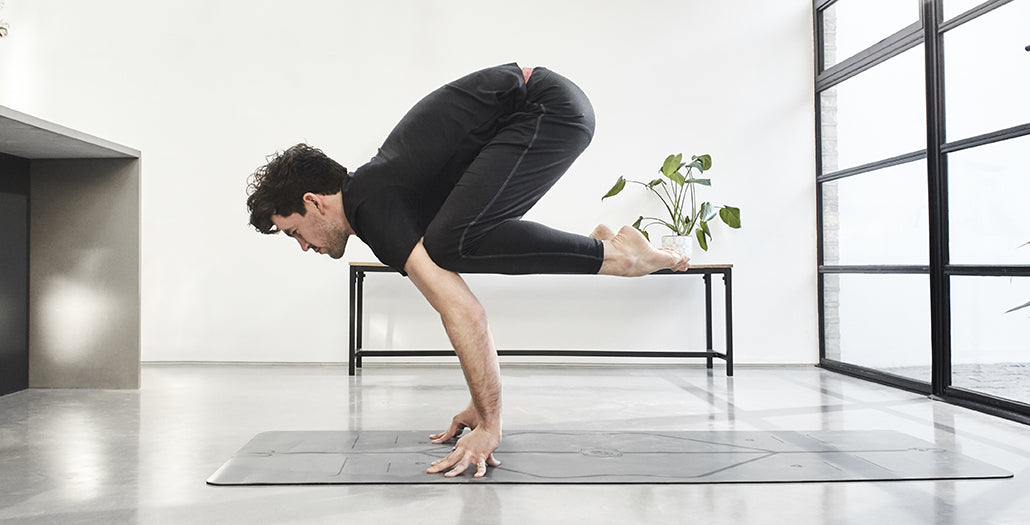
Crow Pose (Kakasana) Instructions
If you are working on the pose, do it every day at home. It’s tough (though not impossible) to get consistent enough practice time in class to have a breakthrough. You may also feel too inhibited about falling to really explore the edges of your balance.
1. To give yourself a firm foundation, start in a squatting position with your palms flat on the floor and shoulders’ distance apart.
2. Come up onto the balls of your feet and separate your knees.
3. Bend your elbows straight back so that your knees make contact with your upper arms as close to your armpits as possible. You may need to move your hands closer to your feet to do this. Just make sure your hands are not coming closer together nor are your elbows winging out to the sides. A strap around the upper arms here is a good way to keep track of your alignment. When you come into the pose, your knees will be resting on the shelf made by your upper arms.
4. Now, you may notice that your butt is still awfully close to the floor. Before you try to take off, you’ll need to lift it up quite a lot. Keep your bent knees resting on your upper arms but straighten your legs until your butt is above your head.
5. Physics dictates that you have to lean forward in order to get your feet off the ground. Figuring out how much to lean is the key to the whole pose, and, indeed, to all arm balances. Look at the floor a few feet in front of you to keep your head up. Keep leaning forward and coming onto your tippiest tiptoes until one foot lifts off the ground. Firm your belly and lift the other foot to join it. Squeeze your knees toward your centre line so they don’t slip off your arms.
6. You may crash-land a few times before you get the hang of the balance. Set up a pillow or two in front of your mat so that you’re not afraid to really lean into it. When you find that sweet spot, your feet will actually fly off the floor. Once you are airborne, bring your feet to touch, tucking your heels up near your butt and keeping your toes active. As you get more comfortable, begin to work toward straightening your arms. When the arms are fully straight, you’ll be in Crane Pose (Bakasana).
Liv’s Tip: When you first start playing with this pose, it’s important to remember that your head is heavy. If you let it hang, it will pull you down, in arm balances and in life. Keep your gaze on the ground in front of you to elevate your head and your mood.
Love,
Liv x















